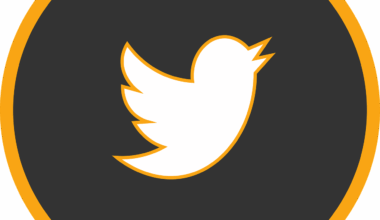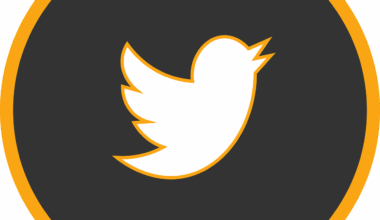Viral Marketing Metrics: Measuring Paid vs Organic Success
Viral marketing has emerged as a revolutionary strategy in the digital space. Its unique ability to gain traction with little to no direct promotion makes it a staple for many brands. Understanding how to measure success between paid campaigns and organic growth is crucial in analyzing the effectiveness of these strategies. It can be challenging to ascertain how much of the success is due to paid efforts compared to organic virality. Key metrics can include reach, engagement, and conversion rates. Observing these metrics over time provides insight into which strategy yields the best return. Paid growth strategies often focus on immediate results, whereas organic efforts like content creation take longer to manifest. Tracking performance on social media platforms assists in understanding user behavior. Utilizing tools like Google Analytics might help paint a clearer picture. Furthermore, social listening can offshore unmeasured success. It measures overall sentiment, which is essential in understanding audience perception. Marketers ought to craft tailored strategies that compliment both organic and paid efforts, balancing immediate gain with sustainable growth.
With the rise of social media, viral marketing strategies have gained unprecedented popularity. Social media platforms serve as fertile grounds for viral content, thus understanding how to measure success becomes paramount. There are several key performance indicators (KPIs) to consider when assessing viral success. For instance, the number of shares, likes, and comments can indicate how well a message has resonated with an audience. Additionally, tracking the growth of followers during a campaign can provide insights into its popularity. Brands should also focus on understanding their audience’s preferences. What kind of content encourages sharing and engagement? By utilizing A/B testing, marketers can identify what resonates more. Furthermore, measuring traffic data after an organic content piece is released ensures brands can gauge immediate interest. It is equally vital to determine how paid advertising supports organic efforts. Most companies will benefit from blending both approaches, leveraging the pull of paid ads to boost organic content. Moreover, analytics tools are indispensable for revealing relevant trends and insights, assisting in refining future marketing strategies.
Understanding Paid vs. Organic Metrics
When evaluating viral marketing success, distinguishing between paid and organic metrics is crucial. Paid efforts typically involve specific expenditures aimed at accelerating visibility. This includes advertisements placed on platforms like Facebook and Google Ads, which provide quick results. Conversely, organic efforts usually revolve around free strategies such as content creation, social media interaction, and community engagement. The conversion rate of both strategies needs careful analysis to determine which yields better outcomes. To measure effectively, calculate the Customer Acquisition Cost (CAC) associated with paid campaigns, and compare it against the organic strategies’ impact on overall customer growth. Tools like HubSpot and Hootsuite can assist businesses in tracking these metrics efficiently. Another essential metric is the lifetime value of a customer (LTV). It highlights how much value each customer brings over time, indicating if paid ads are generating worthwhile returns. While initial investments may differ vastly, long-term growth often heavily relies on successfully engaging with users organically. Consequently, this emphasizes the importance of cultivating strategies that enhance brand loyalty and customer retention, leading to sustainable growth.
The Importance of Engagement in Viral Campaigns
Engagement stands at the heart of successful viral marketing campaigns. Without it, no marketing strategy can thrive, whether paid or organic. The depth of engagement can reveal audience sentiment, which is an invaluable metric in gauging a campaign’s success. An engaged audience is likely to share content, increasing virality potential. Measurement tools can help determine engagement rates effectively. The number of comments and the nature of discussions provide insight into audience perceptions. Strong engagement serves as a catalyst for higher organic reach. Marketers need to actively participate in conversations rather than merely broadcasting messages. Being responsive can bolster brand loyalty, prompting customers to advocate for the brand among their networks. Thus, creating engaging content that prompts discussions will yield tremendous benefits for virality. By utilizing release schedules that align with high traffic periods, brands can maximize their visibility and engagement. Infographics, videos, and interactive content can significantly improve engagement levels as these formats foster interest more readily. Brands should also not hesitate to ask followers for feedback, ensuring content aligns with audience expectations.
As viral marketing strategies evolve, measuring long-term impact becomes a priority. While immediate metrics provide insight into the campaign’s success, understanding its effect on brand reputation can yield a broader perspective. Tracking sentiment analysis tools can provide valuable data on how public perceptions shift post-campaign. Alongside social media metrics, assessing website traffic changes can reveal shifts in audience interest. A surge in traffic following an organic campaign suggests a successful outreach. Additionally, analyzing referral traffic from social media channels highlights which platforms resonate most with audiences. If the results indicate a continual influx of visitors, this hints at successful brand recognition and affinity. Implementing feedback loops allows brands to assess the effectiveness of their engagement efforts. Aligning sales data with campaign timelines is another vital aspect. This correlation can reveal how paid efforts contribute to organic growth, where subsequent purchases affirm brand loyalty. Due diligence ensures marketers are prepared for future campaigns, equipped with data to optimize strategies. Overall, it remains crucial to consider both immediate and long-term metrics for a holistic evaluation of marketing initiatives.
Incorporating User-Generated Content
User-generated content (UGC) has a profound impact on enhancing both organic and paid marketing efforts. This type of content harnesses authentic voices within the community, thus significantly improving engagement rates. Research consistently indicates that consumers trust peer recommendations over brand messaging. Thus, integrating UGC can amplify virality, driving organic growth while simultaneously benefiting paid strategies. For brands, incentivizing customers to share their experiences can create a wealth of content that resonates with target audiences. Including such visuals in paid advertising can humanize a brand, fostering trust and relatability. By properly leveraging UGC, brands create environments that encourage sharing, contributing to organic reach. Engaging with customers who create content can further enhance brand relationships, encouraging loyalty and repeat interactions. Establishing a clear process for gathering and utilizing UGC is essential. This could involve running campaigns that encourage sharing specific hashtags or offering incentives. Measuring the impact of UGC is vital; metrics such as sharing rates and engagement can highlight the effectiveness of these contributions. Combining this content with traditional marketing strategies ensures a well-rounded approach to success, nurturing growth.
Lastly, analyzing the competitive landscape can provide valuable insights into viral marketing strategies. Understanding what competitors are achieving allows brands to benchmark their metrics effectively. Utilizing tools like SEMrush or BuzzSumo can reveal which topics are resonating within an industry, assisting in fine-tuning content strategies. This competitive analysis reveals content gaps, where brands can excel by providing unique value to audiences. Additionally, assessing how competitors engage with their audiences allows for tactical improvements in customer relations. When analyzing paid campaigns, understanding competitors’ ad placements and messaging can inform brand strategies. Marketers should investigate the sources of successful viral campaigns and extract lessons from their design and execution. This knowledge can inform how media is chosen, when events are scheduled, and what types of content are produced. Ultimately, fostering an environment of adaptability is vital in the ever-evolving landscape of digital marketing. Brands must learn from each experience, adapting based on both paid modalities and organic shift observations to create robust viral marketing strategies. Embracing a dual approach of continuous learning will better position brands for future success.
In conclusion, measuring success in viral marketing requires comprehensive approaches that integrate both paid and organic strategies effectively. By understanding key metrics and actively engaging with audiences, brands can enhance their outreach. Utilizing user-generated content and analyzing competitive landscapes further strengthens marketing initiatives, fostering sustainable growth. Together, these elements create an interwoven strategy that maximizes impact and reaches audiences in meaningful ways, ultimately leading to sustained success.


